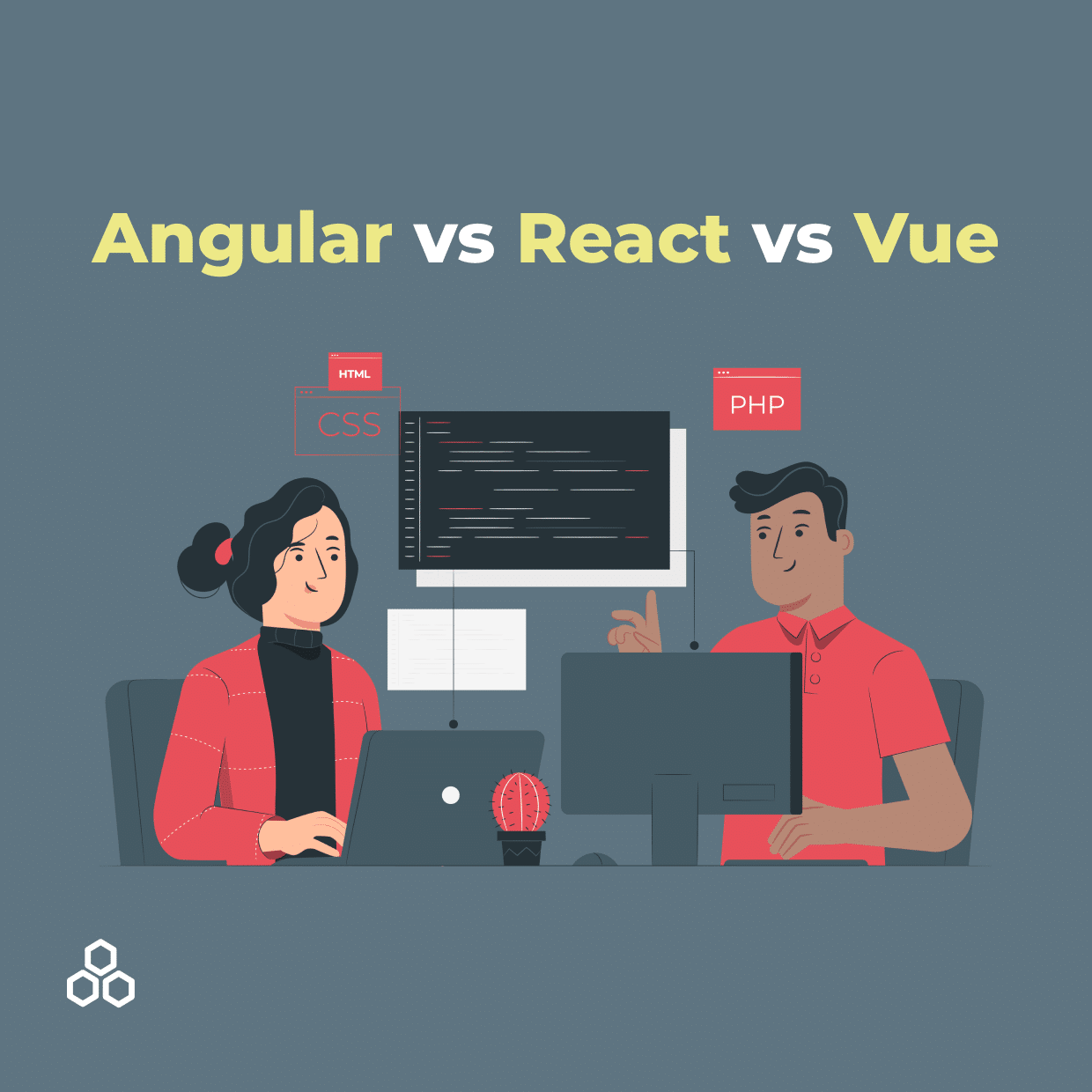The battle between Angular Vs React Vs Vue: Choosing the right front-end framework can be a daunting task. A couple of years ago, React and Angular dominated the scene. But recently, Vue.js has emerged as a powerful contender. This blog will help you navigate the pros and cons of each framework to pick the perfect one for your project!
Popularity
Based on the late 2018 chart, the number of jobs that demand a skill set of angular and react are roughly the same (with angular being slightly higher).
Vue is not as popular as React and Vue (only 20%).
Community is extremely important when it comes to these frameworks as it provides the users with various packages, extensions, and knowledge to make their work easier.

The chart above shows that Vue has many watchers, stars, and forks compared to React and Angular. This shows that Vue is completely improved and developed by the open-source community.
The high number of contributors for React and Angular show that these two frameworks are actually mostly developed by the actual employees of Facebook (react) and Google (angular).
Migrations
are major updates of the framework you use that can often mess up your code, causing you to rewrite or re-implement some functionalities of your work. For this reason, it is very important to know the update patterns of these frameworks. This will allow you to know when you should implement changes to keep things smooth and as compatible as possible.
Angular
usually goes through major updates every six months. On top of this, there also is a period of another six months before any major APIs are deprecated. This gives its users about a year of time to prepare for the changes. However, these major updates can be a double-edged sword as a version difference can and most often will require its users to implement major changes to their code.
React
highly values stability which is why many big companies such as Twitter and Airbnb rely on it. In addition, React efficiently allows upgrades through versions.
Vue usually keeps things very similar between versions. For example, about 90% of the API is the same between Vue version 2 and Vue version 3.
Working with Vue Vs Angular Vs React
There are many factors that determine how good a framework is to work with.
Size and load times
Sizes between frameworks are not as important. However, it is good to note that Angular is the largest out of all three.
Components
It is important to note that all three frameworks are component-based.
Angular
calls components as ‘directives’. It separates the UI part of components as attributes of HTML tags, and their behaviors in the form of javascript code.
React
React combines the UI and behavior of components. The same part of the code is responsible for creating a UI element and dictating its behavior.
Vue
Like React, behavior (javascript) and UI (HTML) are also a part of the components. Vue is also highly customizable, making it easy to integrate with other libraries such as Bootstrap.
Learning curve
Angular
is hard to learn because It can be used as a complete solution. It also requires its user to learn TypeScript and concepts like MVC.
Despite this, Angular can be a good starting point for fully understanding how the front end works.
React
React provides its users with many documentations that aid them in getting started with React. In addition, there are also plenty of sources on Stack Overflow that may help its users. Because of this, React is more accessible than other frameworks. However, learning React can still be challenging if its users must implement additional functionality.
Vue
Out of all three, Vue has the highest customizability, making it the easiest out of all three to learn. Vue also overlaps with Angular and React regarding core functionality, such as having a component-based structure. However, being highly customizable also makes it harder to debug and test.
Other Facts
React and Vue are technically not frameworks. From the MVC standpoint, these two only represent the View Layer.
Five Factors to Consider
There are multiple factors to consider when choosing which framework to use:
Speed
If you are interested in the speed and performance of the app, then go for native app development and the framework that supports it.
Multiplatform Apps
If you want the app to reach a wider audience, go for hybrid app development.
Ease of Development
App Features
these features include things like the professional look, good compatibility with the mobile devices, specific UI standards…etc.
Use of Hardware
Does your application depend on the hardware features such as GPS and camera of the device? You need to keep this in mind and select the framework accordingly.
Security
You need to know which framework provides the best security.
When it comes to speed, React is the fastest with its virtual DOM allowing a seamless performance and ensuring that even high-load applications have fast rendering.
For cross-platform app frameworks, React Native also should be mentioned. React Native is built on JavaScript and it allows for building mobile applications that work both on Android and IOS. (Although React Native is slightly different from React.js, they are similar enough to learn from one another in a very short period of time).
Regarding ease of development, as mentioned earlier, Vue takes first place with its high customizability and high similarly to React and Angular
When it comes to security, despite the fact that frontend frameworks have little to do with the actual security (as it is mostly done in the backend), Angular takes the spot. Angular is by far the most secure client-side web framework, offering highly secure features such as DOM sanitation.






